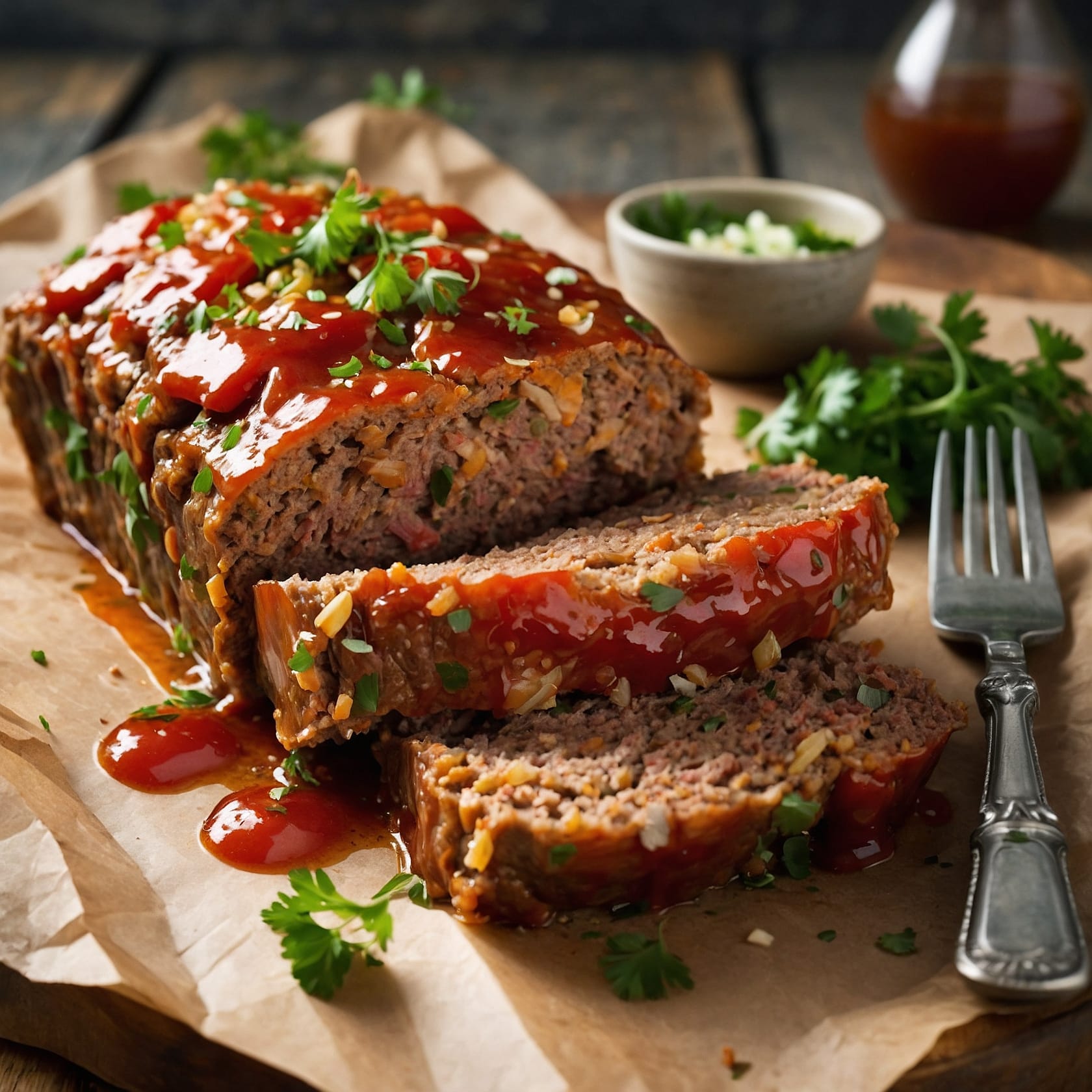Making the perfect meatloaf starts with the right seasoning. A homemade meatloaf seasoning recipe not only elevates your dish but also allows you to customize it to your exact preferences. In this in-depth guide, we’ll cover everything from the essential ingredients to creative uses and variations. You’ll also learn how to pair meatloaf with other dishes for a complete dining experience.
For more inspiration, we’ve included both internal and external links to recipes and resources to expand your culinary knowledge. Let’s dive in!
Why You Should Make Your Own Meatloaf Seasoning
Seasoning is what transforms ground meat into a flavorful masterpiece. Making your own meatloaf seasoning recipe has several benefits:
- Customization: Adjust flavors to suit your palate.
- Cost-effectiveness: Use pantry staples to save money.
- Health benefits: Skip preservatives and artificial additives found in pre-made mixes.
- Versatility: Use your seasoning in other recipes, not just meatloaf.
For an overview of the benefits of fresh spices, check out Healthline’s guide to fresh spices.
Essential Ingredients in a Meatloaf Seasoning Recipe
A great seasoning blend combines both spices and herbs for depth of flavor. Let’s break down the essentials:
Spices
- Garlic powder: Adds savory depth.
- Onion powder: Enhances the umami flavor.
- Smoked paprika: Introduces a subtle smokiness.
- Black pepper: Provides a sharp, earthy kick.
Herbs
- Parsley: Brings freshness.
- Oregano: Adds a hint of bitterness for balance.
- Thyme: Complements the meat’s natural flavors.
Optional Add-Ons
- Cayenne pepper: For those who like it spicy.
- Mustard powder: Adds a tangy undertone.
- Salt: Enhances all the other flavors.
For complementary dishes, pair your meatloaf with the Butternut Squash Lentil Soup, a wholesome side that balances the dish perfectly.
How to Make a Classic Meatloaf Seasoning Recipe
Follow this tried-and-true recipe to get started:
Ingredients
- 2 teaspoons garlic powder
- 2 teaspoons onion powder
- 1 teaspoon smoked paprika
- 1 teaspoon parsley
- ½ teaspoon thyme
- ½ teaspoon oregano
- 1 teaspoon salt
- ½ teaspoon black pepper
Instructions
- Combine all the spices and herbs in a bowl.
- Mix thoroughly to ensure an even distribution.
- Store in an airtight container in a cool, dry place.
For tips on storing your spices to keep them fresh, visit Food Network’s guide to spice storage.
Creative Variations of Meatloaf Seasoning Recipe
While the classic recipe is a solid foundation, you can customize your seasoning to match specific tastes or dietary needs.
Spicy Meatloaf Seasoning
- Double the smoked paprika.
- Add ½ teaspoon cayenne pepper for heat.
Italian-Inspired Seasoning
- Replace parsley with basil.
- Include 1 teaspoon rosemary for an aromatic twist.
- Add 1 tablespoon grated Parmesan cheese.
Low-Sodium Option
- Cut the salt in half or use a salt substitute like potassium salt.
Gluten-Free Blend
- Ensure all spices are certified gluten-free.
- Pair with gluten-free breadcrumbs in your meatloaf.
For more seasoning inspiration, explore Turkey Breast Cajun Recipes, which offers bold, spicy ideas.
How to Use Your Meatloaf Seasoning Recipe Beyond Meatloaf
A great seasoning blend is incredibly versatile. Here are some creative ways to use it:
1. Burgers
Mix the seasoning into ground beef before shaping patties. This adds an extra layer of flavor to your burgers.
2. Soups and Stews
Sprinkle a teaspoon into broths or stews for an instant flavor boost.
3. Meatballs
Incorporate the seasoning into your meatball mixture for a rich and consistent taste.
4. Roasted Vegetables
Use the blend as a dry rub for veggies before roasting them in the oven.
Tips for the Perfect Meatloaf with Homemade Seasoning
Seasoning alone isn’t enough; the technique matters, too. Follow these tips for a fail-proof meatloaf:
1. Choose the Right Meat
- A mix of ground beef, pork, and turkey provides the best texture.
- Use leaner meats for a healthier option, but balance with enough fat for moisture.
2. Use the Right Binder
- Include breadcrumbs, oats, or almond flour to hold your meatloaf together.
- For a gluten-free option, substitute with crushed gluten-free crackers.
3. Perfect the Topping
- Classic ketchup glaze: Mix ketchup, brown sugar, and vinegar for a sweet and tangy topping.
- Tomato-based sauces: Try marinara or barbecue sauce for a twist.
For an elevated dining experience, serve your meatloaf with a side of Pumpkin Banana Loaf, which adds a sweet finish to the meal.
FAQs About Meatloaf Seasoning Recipe
1. Can I Use Store-Bought Seasoning?
Yes, but homemade blends are fresher, healthier, and customizable.
2. How Should I Store My Seasoning?
Keep it in an airtight container in a cool, dark place to preserve freshness.
3. Can I Make a Vegan Version?
Absolutely! Use the same spice blend to season plant-based proteins like lentils or tofu.
4. How Long Does Homemade Seasoning Last?
If stored properly, it can last up to 6 months. For best results, use within 3 months for maximum flavor.
The Importance of Complementary Dishes
While meatloaf is the star, pairing it with the right sides enhances the overall meal. Try these options:
- Lentil Turkey Soup: A hearty, protein-rich soup.
- Butternut Squash Lentil Soup: Adds a comforting, nutritious side.
- Turkey Stuffing Roll-Ups: A creative alternative to traditional sides.
Conclusion
A meatloaf seasoning recipe is more than just a mix of spices—it’s the foundation of a flavorful, memorable dish. By making your own seasoning, you control the flavors, health benefits, and cost. Beyond meatloaf, this versatile blend can elevate burgers, soups, and even roasted vegetables.
With the tips and recipes in this guide, you’re well on your way to mastering the art of meatloaf seasoning. Start experimenting with variations, pair your dish with complementary recipes, and enjoy the satisfaction of creating a restaurant-quality meal at home.
For more cooking ideas, explore Workshop Recipes for a variety of creative and delicious recipes.form your kitchen into a hub of bold, comforting flavors!


3 thoughts on “The Ultimate Meatloaf Seasoning Recipe: Tips, Variations, and Uses”